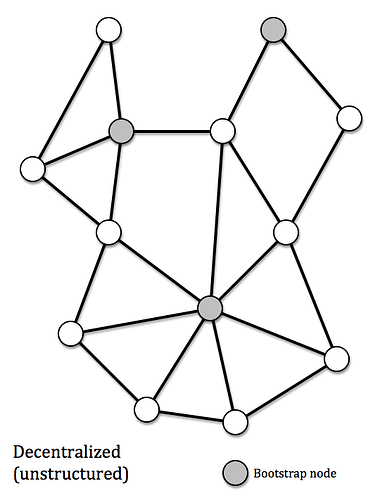1. Transaction on the GNEISS network are broadcasted to all Ethereum nodes on Ethereum’s Network. Each Individual Ethereum Node collects transactions in to a block.
2. If the node accepts the new block, it means that all transactions in that block are valid and are not already spent.
3. In order to show that the node has accepted the block, it begins to start to work on creating the next block in the chain.
Where do My Transactions Take Place?
The GNEISS app essentially replaces traditional dependency upon third-party market vendors to make transactions, and also provides a unique capacity for users to easily create crypto-assets of their choosing to trade in a digital marketplace via smart contracts.
GNEISS is not subject to these risks because of its:
- Decentralized, peer-to-peer exchange system
- Operation with low fees,
- Greater transparency,
- Accurate history of all transactions using smart contracts recorded by Ethereum’s public blockchain.
GNEISS could securely automate the entire infrastructure of banks or financial institutions by maintaining the public record of transactions while offering complete anonymity for users. GNEISS allows users or businesses options on what transactions to make public or keep private.
All smart contracts have the option to be public or private while being self-enforceable through the Ethereum blockchain, which automatically controls the funds and payments of any contract deal.
However, GNEISS makes any Ethereum contract incredibly easy to manage through the GNEISS platform by automatically:
-
Organizing files,
-
Enacting Ethereum contract transactions through the Function Manager,
-
Providing a Graphical User Interface (GUI) that any non-techie can understand.
Click here to see Sections of the White Paper that Discuss Transactions
Peer-to-Peer Smart Contract Transactions
Each E-Vault crypto-asset or smart contract has a chain of digital signatures stemming back from its origin, recording and enabling each step of the peer-to-peer smart contract transactions in the entire GNEISS system. Each E-Vault user transfers ownership of any crypto-asset or smart contract to the next E-Vault by digitally signing that coin’s record with a hash of the previous transaction and the Ethereum public wallet key of the next E-Vault. In order to verify authentic ownership of the chain, a user can search the signatures and recorded history back to the crypto-asset or smart contract’s inception. This way the entire system is instantly auditable by either public or private parties. Every transaction is stored in the Ethereum blockchain, which is composed of around 6,000 nodes at the time of this writing.
Anonymity is insured with the GNEISS app because only the activity of the E-Vault’s wallet address can be seen by the public. One of the unique features of the GNEISS app is that it offers the option to privately match a E-Vault wallet address with the proper information for verification, Know Your Customer (KYC) and Anti-Money Laundering (AML) legislation.
GNEISS Network
- The steps to run any transaction through the GNEISS network are as follows:
- User interfaces with the GNEISS portal or Ethereum’s network
- New transactions are broadcasted to all Ethereum nodes
- Each Ethereum node collects new transactions into a block
- Nodes accept the block only if all transactions in it are valid and not already spent
- Nodes show their acceptance of the block by working on creating the next block in the chain, using the hash of the accepted block as the previous hash.
Privacy
Traditional banking used to be somewhat anonymous in the Gold Standard days. Paper currencies and precious metals secured customers’ privacy because no data was recorded after trading, unless it was documented by the involved parties or banks. However, the advent of the technical revolution allowed banks to integrate their practices with computers, and eventually, the Internet. With Internet banking, third parties could offer convenient systems that made personal online banking effortless, but at the cost of customers’ privacy. Every debit and credit card transaction is now recorded along with the exact details of that transaction. Some third parties even resell this information for marketing purposes, which is obviously unethical.
The GNEISS platform fixes all of this by offering the same convenience consumers have grown accustomed to, while maintaining users’ privacy and anonymity. This is accomplished the same way as bitcoin transactions since both use roughly the same blockchain technology. Each E-Vault has a unique randomized address (GNEISS Address) which is its identity. E-Vaults that wish to be public can identify themselves with their unique GNEISS Address. E-Vaults that wish to stay anonymous need only identify themselves with their given GNEISS Address. For extra anonymity, when E-Vaults transact coins or contract with each other, they have the option to
make that transaction public or private. Thus, GNEISS provides multiple layers of privacy and anonymity for every E-Vault user.
Ethereum Nodes
Ethereum: A public blockchain platform that powers smart contracts via apps created by developers around the globe. Ethereum’s computing platform is Turing complete, meaning it makes up a decentralized virtual machine that can execute any peer-to-peer smart contracts.
Ethereum nodes will always recognize the longest chain to be the correct one, and prioritize on extending it over any other smaller chain. If two nodes broadcast different versions of the next block at the same time, then some nodes may receive one or the other first.
The tie is broken when the next block is found and one branch becomes longer and therefore dominate. The nodes that were working on the shorter blockchain will then switch to the longer one.
New initiated transactions do not necessarily need to reach all nodes. As long as they reach many nodes, they will get into the blockchain. If a node does not receive a block, it will request that block when it receives the next block and realizes one is missing.

